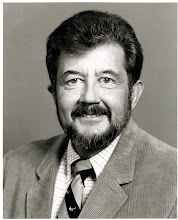There are e-mails circulating writing about vast oil resources in the Bakken Formation in the Williston Basin that includes parts of North Dakota and Montana. There are implications that this resource has been kept secret and some say that environmentalists have stalled development of Bakken formation oil. Well, I am sure there are conspiracies around, but oil in the Bakken Formation is not one of them. There certainly is and will be oil production from the Bakken Formation, but it will not eliminate our increasing need for imported oil.
Bakken Formation oil has hardly been a secret. Interest in it started as long as 35 years ago. http://en.wikipedia.org/wiki/Bakken_Formation The article mentions Leigh Price, who I knew when I worked in Denver in the 1970s. The Bakken Shale (as it was known then) has always been his hobby horse. Too bad he did not live long enough to see all the hysteria on it today.
Although environmentalists (who are often blamed) might like to stop the drilling, they are notably unsuccessful. North Dakota, for example, has offered a tax break to anyone who will drill. Prior to the recession, there were hundreds of drill rigs operating on the Bakken, but I believe interest has dropped because of the economic conditions.
The e-mails have been carelessly put together. You don't drill 1,000 ft but more than 10,000 ft, Then you have to turn the drilling to horizontal and drill along a thin dolomitic unit between two shale units. Then you have to "frac" (fracture) the rock by some process such as putting water down the hole under very high-pressure pulses (hydrofracking). While all this is technologically possible, it is difficult and expensive. To the best of my knowledge, none of the major oil companies have been involved in this endeavor. They are more interested in deepwater drilling. The smaller Marathon Oil company has been involved, however, but a major - Conoco Phillips - entered the fray in 2010.
At the present time, the best producing field in the Bakken is in Montana (Elm Coulee Oil Field) which is actually producing (53,000 bbl/day in 2007).
But don't get too excited about the potential of Bakken oil because production from America's largest oil field - Prudhoe Bay - on the north slope of Alaska is declining rapidly so the first thing new oil production must do in the U.S. is to replace the declining production from Alaska. And the problem is worse than that because soon the production from Prudhoe Bay will decline to the point where the oil must be degraded (watered) to form sufficient volume to keep the Alaskan pipeline open. Fortunately, exploration is going on full tilt in the adjacent (to the West) National Petroleum Reserve - Alaska (NPRA) that might help in Alaskan north slope production. If we could bring ourselves to explore the Alaskan National Wildlife Reserve (ANWR)* to the East of Prudhoe Bay, it would also help extend the life of north slope oil. But natural gas in the Prudhoe Bay deposits (formerly used to help drive out the oil) is now available for use and plans are afoot for a gas pipeline coming down through Alaska and Canada to the lower 48 states.
Incidentally, when I was a young geological engineering student back in the early 1950s, I saw a drill core from a producing limestone in the Williston basin and was amazed that it just looked like a solid rock. The word reservoir conjures up a vision of a cavern or something, but that is not the case. The reservoir is solid rock. Oil production from the Williston Basin has gone on for more than 50 years: http://en.wikipedia.org/wiki/Williston_Basin
*Actually there is a moderate-sized oil field adjacent to ANWR in Prudhoe Bay called the Sourdough Field. Two holes have been drilled with oil showings in sight of ANWR. Some of the oil drawn from this field would come from under ANWR. Development of this field has been held up, however, because of a dispute between Sarah Palin (when she was governor of Alaska) and George W. Bush (when he was President of the U.S.) over how the production profits would be divided between the state of Alaska and the U.S. government. Now with a new governor of Alaska and a new president of the U.S., perhaps the dispute can be solved.
Subscribe to:
Post Comments (Atom)

No comments:
Post a Comment